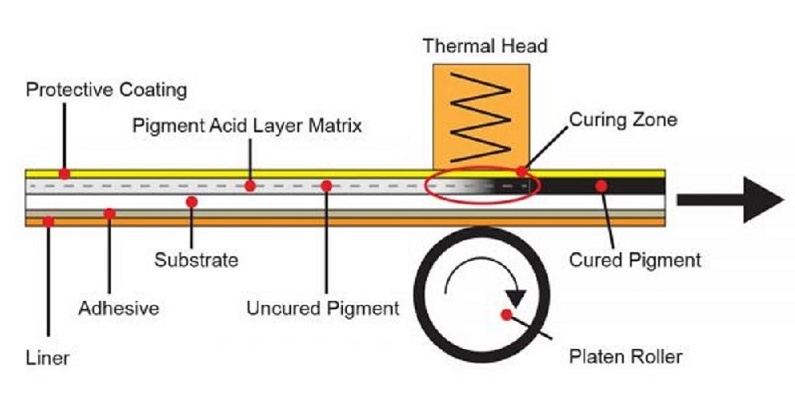Thermal printers are the preferred choice of many businesses these days, primarily, because they offer a lot of convenience to its users when they are printing labels, receipts and bar codes. These printers are not only fast, but also cost effective and can be easily used at a set location or on the go. The popularity of thermal printers has generated interest among users to know more about these printers, especially, about their working. Therefore, I will explain in this guide how a thermal printer works and everything you need to know about thermal printers.
What is a Thermal Printer?
As the word ‘Thermal’ is connected to ‘Heat’, a thermal printer uses heated printhead to produce black text and images on a paper. How this thermal printhead will produce texts and images on a paper depends upon the type of printing method its employing. Since, thermal printers offer flexibility to use various media types, are highly durable and have multiple applications, they are a preferred choice of many small and large businesses. These printers create texts and images that have a long lifespan and are highly resistant to sunlight, moisture or other harsh conditions.
Advertisement
How does a Thermal Printer Work?
There are two types of printing methods which can be used by a thermal printer. Both of these methods use a thermal printhead that uses heat to produce prints.
1) Direct Thermal Printing

In this printing method the thermal printhead applies heat and pressure on the surface of the thermal paper. Since the thermal paper used is heat-sensitive it reacts to the applied heat and blackens, thus, producing an image or text on the paper. This type of printing method doesn’t require any ribbon, toner or ink for printing.
The most prominent benefit of this printing method is that it has low operating costs as it doesn’t require any ribbon, ink or toner. However, thermal paper used in this printing method is sensitive to light and heat, which makes the prints vulnerable to fading as they get old. Also, since the color of the print is determined by the printing material, you can only print in one color at a time with the thermal printer using this printing method.
2) Thermal Transfer Printing

In this printing method the thermal printhead applies heat and pressure on a wax-coated ink ribbon/ribbons onto the surface of the printing paper. As the heat and pressure is applied on the wax, it melts and exposes the ink, which then transfers and dries on the paper or printing material.
The primary benefits of this printing method over direct thermal printing method are that its prints are more fade-resistant and you get the option to use multiple ribbons at once, which means you can get multiple colors in your prints. However, not every thermal printer that uses this printing method offer the option to use multiple ribbons. Also, since this printer requires an ink ribbon for printing, its operational costs are more as compared to direct thermal printers. Due to additional moving parts the maintenance costs are also slightly more.
What are Different Types of Thermal Printers?
Depending upon their application there are broadly three types of thermal printers which are available in the market. Primarily, you can differentiate these printers by size, but there are few other differences as well.
- Mobile Thermal Printers: These thermal printers are usually handheld model which users can carry anywhere as they are lightweight and support wireless connectivity. Along with portability, they are easy to install, have high durability, and some are temperature resistant and waterproof as well. Usually, mobile thermal printers are used in warehouses and in field environments.
- Desktop Thermal Printers: These thermal printers are larger in size when compared to mobile printers. These are low-maintenance printers which can offer both wired and wireless connectivity options. You can easily print decent volume of receipts or labels without reloading the paper roll. Usually, desktop thermal printers are used in retail businesses.
- Industrial Thermal Printers: These thermal printers have a large size and are capable of printing at high volumes. These are rugged printers which you can reliably use for completing 24/7 print jobs. These printers are top of the line thermal printers bundled with advanced features so that they are easier to control. Usually, industrial thermal printers are used in manufacturing and logistics businesses.
As you can see, thermal printers have variety of applications, they offer portability, speed and are highly energy efficient. It doesn’t matter which printer type you choose, all thermal printers are durable, low-maintenance and reliable printing machines.

